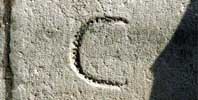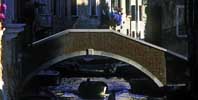For many centuries Venice was a group of islands connected only by ferries or wooden walkways. Starting in the eighteenth century, and more massively in the nineteenth century, these artifacts were replaced by bridges made out of wood or cast iron. In fact, the water they were immersed in, the humidity in the air, the mildew and xylophagous insects reduced the lifespan of the wood which, for the more exposed structures such as bridges, did not last more than three decades. So the time came for the bridges, as it had for the buildings and embankment walls, to use construction materials based on their durability and not simply on the cost of construction, which would have been much cheaper in the case of wood because it is so easy to find, transport and build with.
Stone bridges, however, also suffer progressive deterioration: loss of plaster from the underside of the vault, voussoirs slipping out of alignment, cracks, loss of material. When the damage becomes irreparable, the bridge is completely rebuilt, as in the case, for example, of the Ponte de l’Osmarin and the Ponte dei Greci. The stone voussoirs are aligned over the curved surface of the cèntina (the wooden support structure that faithfully reproduces the vault of the demolished bridge), and the arch is rebuilt out of brick. When there are no alternative routes in the immediate vicinity, the interruption to the circulation is relieved by the construction of temporary service bridges.







